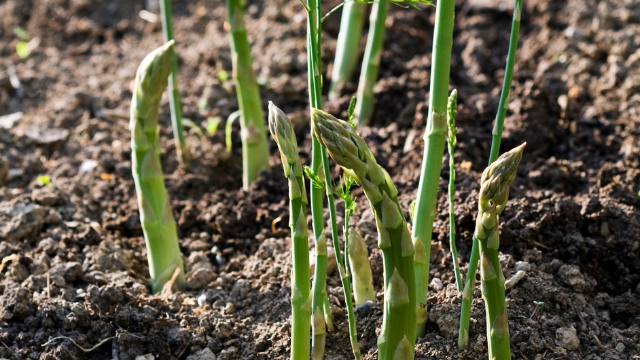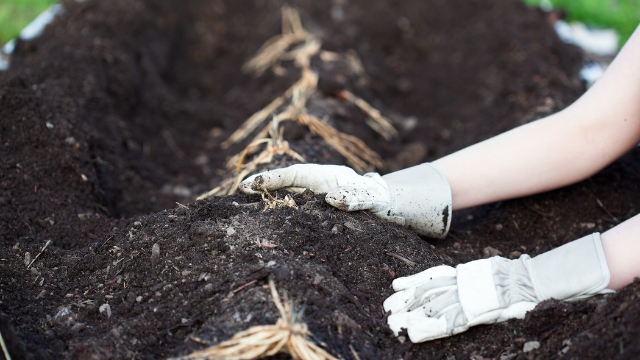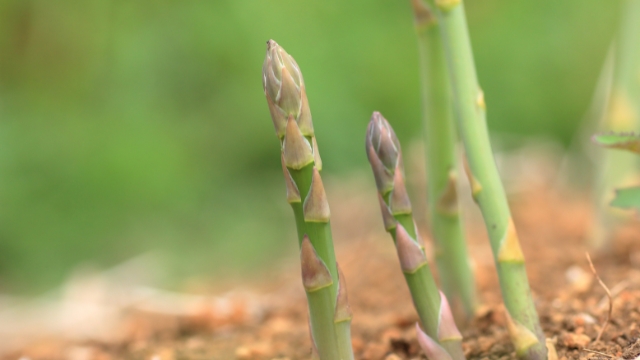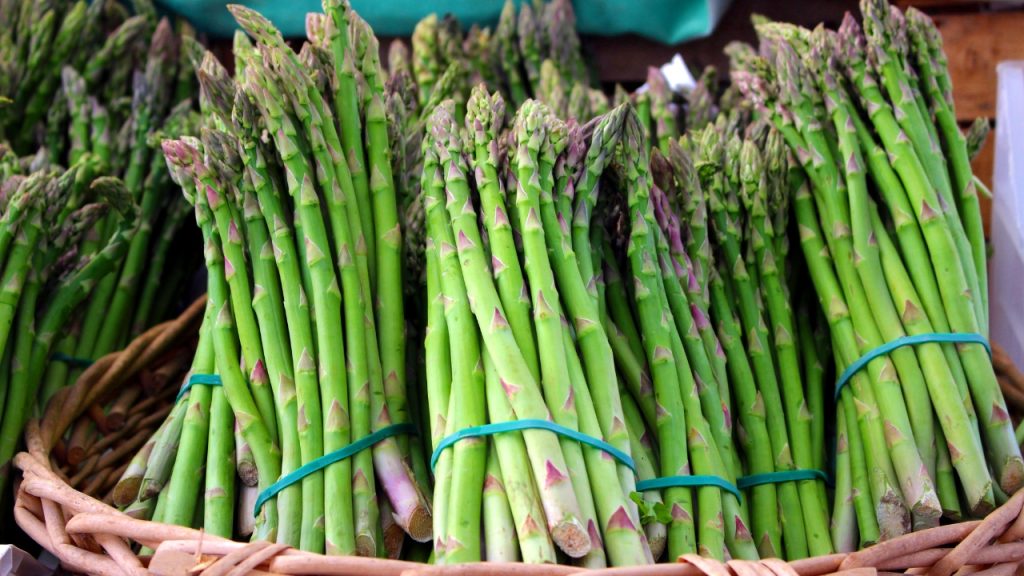Asparagus Cultivation
The “Step-by-Step Guide to Asparagus Cultivation: From Planting to Harvesting” provides a comprehensive roadmap for both novice and experienced gardeners to successfully grow and enjoy their own bountiful harvest of asparagus. Beginning with the essential steps of site selection, variety choice, and soil preparation, this guide covers every aspect of asparagus cultivation. From planting techniques and proper maintenance practices to troubleshooting common issues, readers will gain the knowledge needed to ensure healthy plant growth and abundant spear production. The guide also delves into advanced techniques, such as greenhouse or container cultivation, as well as tips for organic asparagus cultivation. Additionally, it offers valuable insights on preserving and enjoying the asparagus harvest, along with highlighting the nutritional benefits of this versatile vegetable. With a focus on sustainable practices, including water conservation and composting, this guide equips gardeners with the tools and information necessary for a successful and environmentally friendly asparagus cultivation journey.
1. Preparing for Asparagus Cultivation

Selecting the Ideal Site:
- 1. Look for a location with well-draining soil for successful asparagus cultivation.
- Optimal sunlight exposure is crucial for the growth and development of asparagus plants.
- Adequate temperature range (between 60°F and 85°F) is essential for optimum asparagus growth.
Choosing the Right Varieties:
- Select asparagus varieties that are well-suited to your climate and growing conditions.
- Consider disease-resistant varieties to minimize the risk of infections during cultivation.
- Choose varieties known for their excellent spear production and taste.
Soil Preparation:

- Conduct a soil test to determine the pH level and nutrient content of the soil.
- Adjust the pH to the recommended range of 6.0 to 7.5 for optimal asparagus growth.
- Add organic matter, such as compost or well-rotted manure, to improve soil fertility and structure.
2. Planting Asparagus

Propagation Methods:
- If starting from seeds, soak them overnight before planting to enhance germination.
- When planting crowns, ensure that the buds are facing upward to promote healthy growth.
- Provide proper spacing between crowns or seeds to allow for the development of robust plants.
Planting Process:
- Create trenches or raised beds to accommodate the asparagus crowns or seeds.
- Place the crowns or seeds at the recommended depth, typically 6 to 8 inches deep.
- Ensure that the asparagus crowns are well-covered with soil, leaving only the buds exposed.
Watering and Mulching:
- Water the newly planted crowns or seeds thoroughly and maintain consistent soil moisture.
- Apply a layer of organic mulch, such as straw or wood chips, around the plants to conserve moisture and suppress weed growth.
- Avoid overwatering, as excessive moisture can lead to root rot and other diseases.
3. Asparagus Bed Maintenance
Weed Control:
- Regularly inspect the asparagus bed and promptly remove any emerging weeds by hand.
- Use mulching as a preventive measure to suppress weed growth and conserve soil moisture.
- Avoid using herbicides near asparagus plants, as they can damage or kill them.
Fertilization and Nutrient Management:
- Apply a balanced fertilizer specifically formulated for asparagus during the early spring.
- Follow the recommended dosage and timing provided by the manufacturer for optimal nutrient uptake.
- Monitor the foliage color and growth of the plants to assess their nutrient requirements throughout the growing season.
Pests and Diseases:
- Monitor for common pests like asparagus beetles and caterpillars, and remove them by hand or apply organic insecticides when necessary.
- Implement proper sanitation practices to minimize the risk of disease transmission.
- Provide adequate air circulation by spacing plants appropriately to prevent fungal diseases.
4. Harvesting and Beyond
Harvesting Asparagus:
- Begin harvesting asparagus spears when they reach a height of 6 to 8 inches.
- Gently snap or cut the spears at ground level to avoid damaging the crown.
- Stop harvesting once the spear diameter decreases significantly or when thin spears appear.
Extending the Harvest Season:
- Implement a rotational planting system to have successive batches ofasparagus ready for harvest throughout the season.
- Leave a few spears unharvested in each crown to allow them to mature and develop into ferns. This process helps replenish the energy reserves of the plant for future growth.
Winterizing the Asparagus Bed:
- Cut down the yellowed ferns in late fall after they have died back naturally.
- Apply a layer of mulch, such as straw or shredded leaves, over the bed to insulate the crowns during winter.
- Remove the mulch in early spring before new growth emerges.
5. Troubleshooting Common Issues in Asparagus Cultivation
Common Problems and Solutions:
- Yellowing or stunted asparagus spears: Ensure proper nutrient levels and address any drainage issues in the soil.
- Thin or spindly stalks: Increase sunlight exposure and adjust fertilizer application for healthier growth.
- Poor spear production: Evaluate soil fertility, address pest or disease issues, and ensure adequate watering.
- Abnormal growth patterns: Monitor for signs of nutrient deficiencies, soil compaction, or root damage.
Dealing with Weeds:
- Regularly inspect the asparagus bed and remove weeds promptly to prevent competition for nutrients and space.
- Mulch the bed with a layer of organic material to suppress weed growth and conserve soil moisture.
- Consider using organic weed control methods, such as hand weeding or applying vinegar-based herbicides.
Addressing Pests and Diseases:
- Monitor for pests like asparagus beetles, slugs, and aphids. Use organic insecticides or introduce beneficial insects like ladybugs to control populations.
- Prevent diseases like rust or fusarium by practicing crop rotation, maintaining proper plant spacing, and ensuring good air circulation.
- If necessary, apply appropriate fungicides or bactericides following the instructions provided.
6. Advanced Techniques and Tips for Asparagus Cultivation
Propagation from Crowns:
- Choose large, healthy crowns for propagation to ensure vigorous plant growth.
- Before dividing crowns, carefully inspect for any signs of disease or pest infestation.
- Plant divided crowns in well-prepared soil, providing adequate spacing between plants.
Greenhouse or Container Cultivation:
- Utilize a well-draining growing medium specifically formulated for container gardening.
- Maintain proper temperature, humidity, and light levels in the greenhouse for optimal growth.
- Consider using trellises or supports to help the asparagus plants grow upright in containers.
Organic Asparagus Cultivation:
- Focus on building and maintaining healthy soil through the use of compost and organic amendments.
- Implement crop rotation to minimize pest and disease issues.
- Utilize organic pest control methods such as beneficial insects, neem oil, or insecticidal soaps.
7.Enjoying Your Asparagus Harvest
Culinary Delights:
- Explore a variety of cooking methods, including grilling, roasting, sautéing, or steaming asparagus.
- Experiment with different flavor pairings such as lemon, garlic, Parmesan cheese, or balsamic vinegar.
- Incorporate asparagus into salads, stir-fries, quiches, or pasta dishes for a delightful culinary experience.
Preserving Asparagus:
- Blanch and freeze asparagus spears to enjoy their freshness throughout the year.
- Pickle asparagus using vinegar, herbs, and spices for a tangy and flavorful treat.
- Dry asparagus to create dehydrated spears that can be rehydrated and used in various recipes.
Health Benefits and Nutritional Value:
- Highlight the nutritional value of asparagus, including its high fiber, folate, and vitamin K content.
- Emphasize the antioxidant and anti-inflammatory properties of asparagus.
- Showcase how asparagus can contribute to a well-balanced and nutritious diet.
8. Sustainable Practices in Asparagus Cultivation
Water Conservation:
- Utilize drip irrigation systems to minimize water waste and ensure targeted watering.
- Collect rainwater in barrels or cisterns for irrigation purposes during dry periods.
- Consider implementing water-saving techniques like mulching and proper soil moisture monitoring.
conclusion,
The “Step-by-Step Guide to Asparagus Cultivation” is a comprehensive resource for cultivating delicious and nutritious asparagus. It covers site selection, variety choice, planting techniques, and maintenance practices. Troubleshooting tips address common issues, ensuring healthy and productive plants. Advanced techniques for greenhouse or container cultivation and the benefits of organic practices are emphasized. Harvesting tips and ideas for preserving asparagus are provided, along with a focus on sustainability through water conservation and composting. This guide equips both beginners and experienced gardeners to embark on a successful asparagus cultivation journey, yielding a bountiful supply of homegrown asparagus spears.

